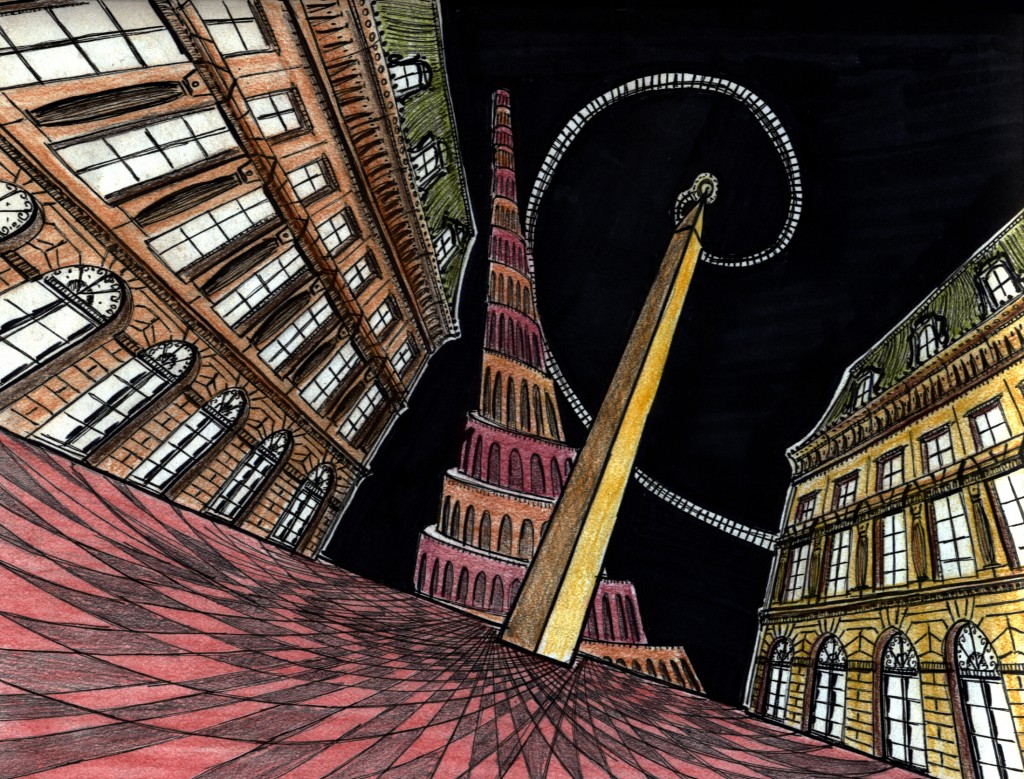When I gaze at the night sky, I wonder: “What does that infinite darkness contain?” I imagine a plethora of other worlds. I see worlds where gravity and inertia vanish. It is a world of my own fabrication, superimposed over the pitch black sky. While I cannot visit such a place, I can still put image to paper.
.

Inspired by the Tower of Babel and the Place Vendôme in Paris
.

Sweet dreams

Sleepless night

Mother moon

UFO landing strip

Security camera – inspired by Bentham’s panopticon

Space station

My little planet

Father Ttme

Foreign land – inspired by Mars

Architect’s nightmare

Inspired by the paintings of Chirico

Inspired by M.C. Escher

Paralax – inspired by the architecture of Eastern State Penitentiary

Vanishing point

Toward infinity

Inspired by Mondrian

Space age church of science

Gears of time

Chasm

Death

Wave

Detroit

Inspired by photos of the Siege of Stalingrad

Invasion

Geometry

Biological warfare

Piranesi’s prison

Train

Inspired by Hokusai’s wave

Space ship

Imaginary night sky in New York City











































































